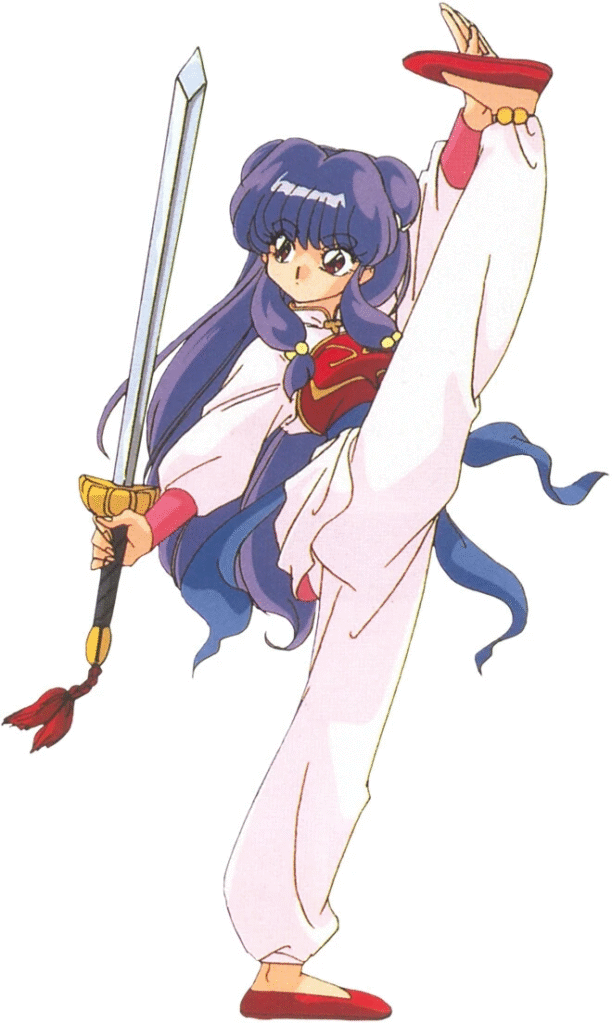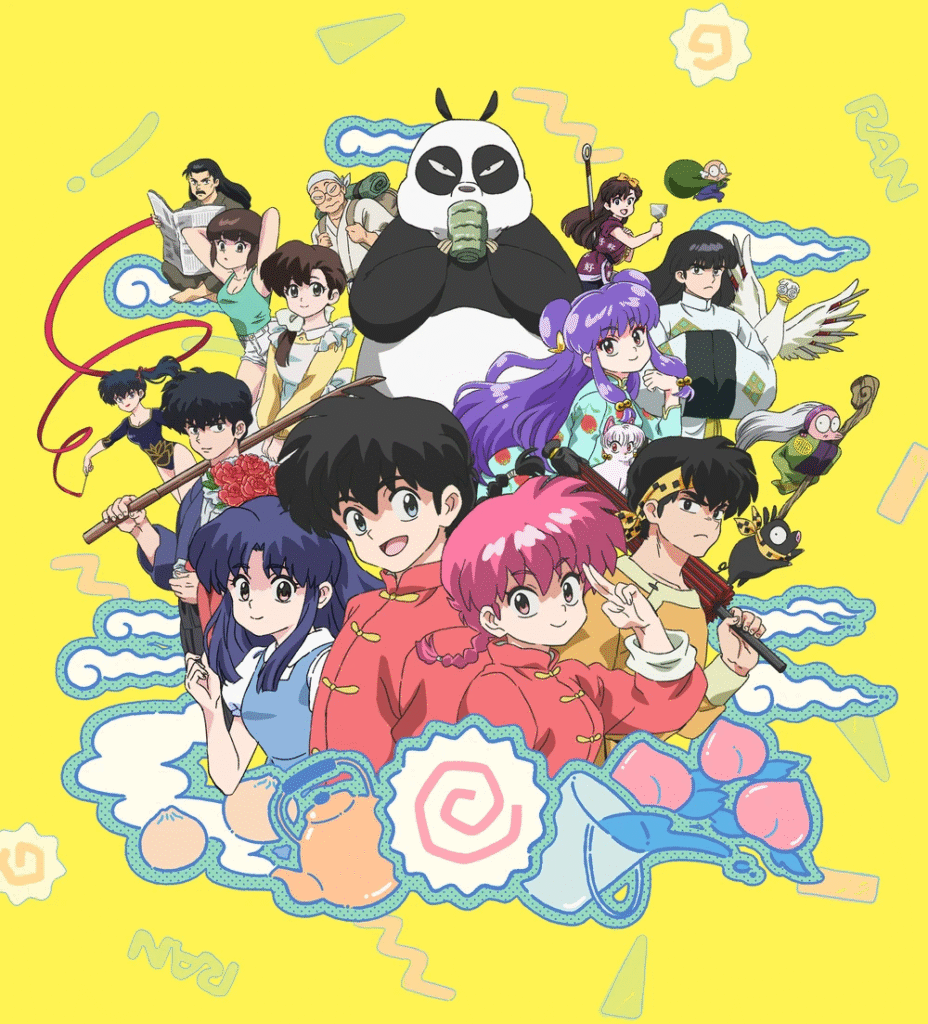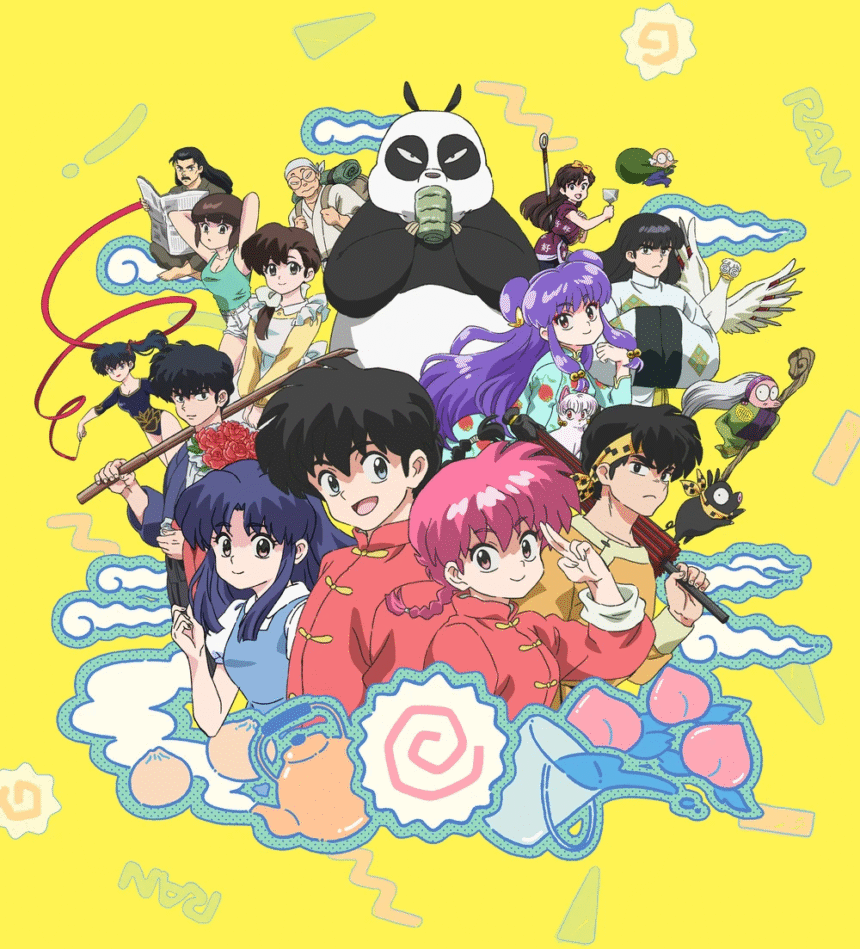
Genderqueer people have always been with us, but it hasn’t been until relatively recently that transgender, nonbinary, and genderfluid people have been depicted on screen. The stigma around such identities has also meant that, more often than not, they are played for laughs as ridiculous characters. One exception from this rule, in conservative Japan in the conservative 1980s, was Ranma ½, which made a splash from the second it was published. It has since become seen as an icon in the LGBTQ+ anime canon in the West after its 1990s localization.
For many queer kids growing up in the 90s and early 2000s, Rumiko Takahashi’s Ranma ½ was as much of a low-key gender awakening as it was a comedy. In a landscape of hetero-coded anime leads and tired tropes, this one came in swinging: martial arts, cursed springs, and a protagonist who changes gender when doused with cold water. A boy one minute, a girl the next. Although it is explicitly a comedy, Ranma’s transformations are never a subject of mockery or disdain from the other characters or the author.
Now, with a modern adaptation in development, there’s never been a better time to revisit just how queer Ranma ½ has always been — intentionally or not.

Gender as Chaos, Comedy, and Commentary
For the uninitiated: Ranma ½ follows teenage martial artist Ranma Saotome, who falls into a cursed spring in China. As a result, he too is cursed, and whenever he’s splashed with cold water, he turns into a girl. Hot water turns him back. Hijinks ensue.
What sounds like a silly gimmick quickly spirals into something much more complex. Ranma navigates a world of fiancées, rivals, body-swaps, mistaken identities, and romantic confusion, all while flipping between boy and girl depending on the temperature of the water.
Unlike some other gender-swap anime, Ranma ½ never leans on self-loathing or panic. Ranma isn’t horrified or upset by his girl form. He’s sometimes frustrated by the inconvenience of a smaller, less powerful body, but he also learns this body’s benefits. Ranma weaponizes femininity and learns to flirt, charm, and subvert expectations. The lines between “boy” and “girl” aren’t just blurred, they’re walked across in tai chi shoes and a cheongsam.
For LGBTQ+ viewers – especially trans, genderfluid, or non-binary folks – this was a revelation. Because here was a character inhabiting multiple genders, and doing so without apologizing for it.

Queer Readings: Intentional or Accidental?
In truth, Rumiko Takahashi probably wasn’t trying to write a queer manifesto. In interviews, she’s said that the gender swapping was the initial thought for the series, and it later developed into a martial arts comedy. It was never pitched as a tool for exploring gender identity: but that doesn’t mean that the theme doesn’t occasionally shine through, and more importantly, it resonated with LGBTQ+ audiences.
That is because queer coding doesn’t require intent, just recognition. Ranma ½ offers a space where gender is slippery, performative, and constantly challenged. And in a culture (both Japanese and global) where rigid binaries dominate, Ranma ½ was an exception, where masculinity and femininity for the protagonist are usually secondary to his desire to get stronger and win the fight. It was a world where identity was both fixed and fluid, hilarious and heartfelt.
Queer fans embraced this concept and character. From early fanfiction circles to modern-day fan art and TikTok cosplay, Ranma ½ has lived on as a cult favorite in LGBTQ+ spaces. Not just for Ranma’s gender chaos, but for the whole ensemble cast, full of oddballs, romantics, crossdressers, and misunderstood villains.
There’s Ryoga, whose rage and confusion can seem like closeted longing. There’s Ukyo, Ranma’s cross-dressing fiancée (one of three) who complicates everyone’s understanding of gender presentation. There’s even Tsubasa Kurenai, a boy who dresses as a girl to attract Ukyo, leading to one of the earliest, most confusing “reveal” scenes in anime history. And of course, there’s Shampoo, whose mix of hyper-femininity and martial arts dominance could have been torn straight out of an initial pitch for Buffy the Vampire Slayer.

Legacy: The Blueprint for Gender-Play in Anime
The first anime adaptation of the Ranma ½ aired from 1989 to 1992, a time when gender nonconformity was barely whispered about in pop culture, let alone animated for prime time. Indeed, the first season was cancelled after receiving low viewing figures. It was only once it was revived that its popularity came into focus, and it became one of the first break-out VHS anime hits in the West in the 1990s.
Many later anime owe a spiritual debt to Ranma ½, including Ouran High School Host Club, Revolutionary Girl Utena, and even Steins;Gate. They all play with gender, fluidity, and identity in ways that Ranma ½ pioneered.
Was it messy? Absolutely. Was it occasionally tone-deaf? Also yes. But it was first; and for many queer viewers, it was the first time they saw something that resembled their own confusion – and their own identity.

A New Era: What the 2024/25 Adaptation Could Mean
In 2024, Ranma ½ returned to our screens with a brand new adaptation, following the success of the 2022 remake of Urusei Yatsura, also a Takahashi work. From the outset, it gained critical acclaim from critics and audiences alike for its smooth animation and bold use of colors. Additionally, because unlike the 1989 anime it doesn’t need to wait for new manga chapters to be published, there’s no filler, and the pacing is greatly improved.
Like the original manga and earlier incarnation of the anime, it is not explicitly concerned with genderbending as a social or philosophical concept. However, this does not mean that the incidental themes are missing, and indeed one could argue that the brighter, more contrasting colors serve to highlight and accentuate the differences between Ranma’s bodies as part of his genderfluid experience.
Moreover, transgender critics who compare the new version to the original have been generally favorable, with some even saying that the new visuals alone make it superior to the old version, as the content is otherwise unchanged (with the exception of some mild censorship of nudity and the removal of ‘filler’ content). It’s a perfect jumping on point for the Ranma-curious, and a great way to polish up the past for long-time fans.
Final Thoughts: Ranma Revisited
It’s easy to write off Ranma ½ as a product of its time. The gags can be repetitive. The gender politics, at times, are awkward.
But beneath all that is something powerful. A show that dared, even by accident, to imagine a world where gender was malleable, fluid, and fun. Where identity could be changed by a splash of cold water and explored through every messy, magical, chaotic moment that followed.
So whether you’re rewatching it as an adult, discovering it for the first time, or checking out the reboot, it is a very good time to be a Ranma ½ fan.

